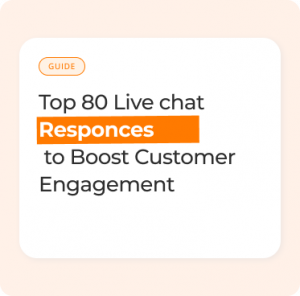Train Your AI Chatbot To Match Your Brand Voice
Summary: This guide shows how AI chatbots can be trained with your company’s style, rules, and knowledge so replies feel human, helpful, and on brand. You will see what data to provide, how to structure tone guidelines, how to test and fine tune, and how Oscar Chat turns brand training into real conversations that convert.
Why your chatbot should sound like your team
Customers do not want robotic replies. They want clear answers delivered with the same voice they see in your emails, ads, and website. When an AI chatbot mirrors your tone and follows your policies, conversations feel natural. Trust increases, friction drops, and more visitors convert.
With Oscar Chat, your company can train an AI assistant using your content, examples, and rules. The result is a humanized chatbot that speaks like your brand, references accurate details, and escalates at the right time.
What “training” an AI chatbot really means
Training means giving the AI the same resources your staff uses. Instead of hard coded scripts, the model learns from rich examples. It picks up vocabulary, tone, and product truth so that it can answer as a well briefed teammate would.
- Company knowledge: product pages, pricing notes, specs, policies, how to buy, eligibility requirements.
- Support materials: FAQs, help center articles, troubleshooting trees, escalation paths.
- Tone sources: brand voice guides, email templates, winning chat transcripts, sample greetings and sign offs.
- Process docs: returns workflow, shipping timelines, onboarding steps, regional differences.
- Content library: blog posts, case studies, press copy, social content that shows your style in context.
Oscar Chat ingests these materials and builds a branded context that guides every response.
Brand voice is not decoration, it is a conversion lever
Tone mismatch breaks trust. A premium brand with casual slang or a clinic with edgy jokes both feel wrong. When the chatbot speaks in your company’s style, customers stay longer, ask more questions, and say yes more often.
- Consistency builds confidence: customers feel they are speaking with your team, not a random bot.
- Clarity accelerates decisions: familiar language reduces confusion and keeps attention.
- Fewer escalations: accurate, empathetic answers resolve issues before handoff.
- Better retention: helpful and human interactions become a reason to return.
How to train your chatbot to match your style
1. Define your brand personality and guardrails
Start by writing a simple voice brief that any new hire could follow. Add examples so the AI can copy your rhythm without guesswork.
- Persona: friendly expert, helpful guide, or formal specialist.
- Tone sliders: formal vs casual, concise vs detailed, playful vs serious.
- Do and do not list: words to use, words to avoid, emoji policy, apology rules, refund phrasing.
- Response patterns: one line summary, short steps, call to action.
- Escalation rules: when to hand off, what to capture first, which team to alert.
2. Provide comprehensive company details
Give the bot the same information your best agents rely on. Use real documents, not summaries only. Depth increases accuracy.
- Products and plans: features, eligibility, limitations, comparisons, upgrade paths.
- Policies: returns, warranties, service level objectives, service hours, territory rules.
- How to buy: steps, payment options, taxes, shipping, expected timelines.
- Use cases and industries: examples, outcomes, typical objections, how you answer them.
- Glossary: your terms, acronyms, and how to explain them in plain language.
3. Add channel specific instructions
Reply length and formatting should match the channel. Web chat can use short bullets. Email can include headers and links. Messaging apps should keep replies compact and personable.
4. Create role prompts for different situations
Your bot can switch roles with context. Create role cards the AI can follow.
- Greeter: welcome visitors, ask one intent question, offer two guided choices.
- Product guide: compare plans, ask two qualifying questions, give a recommendation with a link.
- Troubleshooter: confirm symptoms, provide short steps, share a safe fallback.
- Billing helper: verify account holder, outline secure steps, gather details for handoff.
5. Test, score, and fine tune
Run conversations against real scenarios. Score each response for accuracy, tone, brevity, and next action. Edit the knowledge base, then retest. Small tweaks to wording and ordering improve outcomes quickly.
6. Deploy everywhere, keep one source of truth
Once trained, the same branded knowledge can power your website widget, Messenger, WhatsApp, Telegram, and email. Manage content in one place so updates stay consistent across channels.
Use context and data to personalize without sounding scripted
Personalization works when it sounds helpful, not intrusive. Train your bot to use only relevant facts and to explain why it asked a question. Keep the tone respectful and clear.
- Reference the product or plan a visitor viewed, then offer a quick comparison.
- When a user is stuck, ask one clarifying question before sharing steps.
- If a policy applies, link to the source and paraphrase in plain language.
- If the answer is unknown, collect details, promise a follow up, and route correctly.
Examples of on brand replies
Support tone, calm and clear
“Thanks for checking. I can help you update your plan. Here are the steps. One, open Settings. Two, choose Billing. Three, select Upgrade. If anything looks off, send me a screenshot and I will guide you.”
Sales tone, consultative not pushy
“Based on your team size, the Growth plan covers the features you asked about. It includes priority chat, custom workflows, and analytics. Would you like a 14 day trial or a quick demo?”
Policy tone, empathetic and specific
“I am sorry this caused trouble. Our return window is 30 days from delivery. I can email a prepaid label now. Once the item arrives at our warehouse, refunds take 3 to 5 business days.”
How Oscar Chat makes brand training simple
Oscar Chat is an all in one messaging and AI platform that lets you build a branded chatbot without code. Upload documents, paste links, add tone rules, then test and deploy. The system learns your vocabulary and patterns, keeps answers consistent, and scales across channels from a single source of truth.
- No code setup: connect the widget, import content, and start testing.
- Custom tone profiles: teach greetings, apology style, and signature phrases.
- Knowledge management: update articles once, keep replies aligned everywhere.
- Multi channel delivery: website chat, Messenger, WhatsApp, Telegram, and email.
- Human handoff: route complex cases to live chat with context and history.
- Analytics: measure resolution rate, time to answer, and satisfaction.
Planning deeper CRM workflows with Salesforce or HubSpot can come later. Oscar Chat focuses first on high quality brand aligned conversations, then expands. If your team needs advanced workflows today, our live chat and lead capture tools provide a fast path while CRM integrations are planned for 2026.
A practical playbook for marketers and support leaders
Week 1: collect and organize knowledge
- Export help center articles, policy pages, and product sheets.
- Pick five strong email or chat replies that demonstrate tone.
- Write your do and do not list and two example greetings.
Week 2: load content and create role prompts
- Upload documents and URLs.
- Create greeter, guide, troubleshooter, and billing role cards.
- Define escalation triggers and required fields for handoff.
Week 3: test and iterate
- Run 25 realistic scenarios. Track accuracy and tone scores.
- Refine wording, add missing sources, shorten long replies.
- Decide which questions should always escalate.
Week 4: launch and monitor
- Publish to your website and one messaging channel.
- Review transcripts daily. Tag wins and gaps.
- Update the library weekly so knowledge stays fresh.
Quality assurance checklist
- Every answer cites a reliable source or a policy when needed.
- Replies open with a one line summary, then steps or a link.
- Formatting fits the channel and device.
- Empathy appears in the first sentence for complaints.
- Each reply ends with a clear next action.
Oscar Chat vs manual scripts
| Capability | Oscar Chat | Manual scripts |
|---|---|---|
| Voice alignment | Learns from real brand content | Hard to maintain consistency |
| Updates | Edit once, apply everywhere | Many duplicated edits |
| Coverage | Understands variations of questions | Only the exact wording works |
| Escalation | Rules for context rich handoff | Often missing or inconsistent |
| Time to value | Days not months | Slow to script and test |
Start training your branded AI chatbot
Bring your voice, rules, and product truth into every conversation. Train once, answer everywhere. When customers message your brand, they will feel the difference.
Frequently Asked Questions
Can an AI chatbot really match our tone of voice?
Yes. When trained on your emails, help articles, and style guide, the model learns your vocabulary, rhythm, and phrasing. It applies those patterns consistently.
What data should we upload first?
Start with the help center, policy pages, top product pages, and five strong chat or email examples that showcase tone and formatting.
How do we keep answers accurate over time?
Maintain a single knowledge library. When a policy or product changes, update the source once and republish so all channels stay aligned.
Can we control when to escalate to humans?
Yes. Set rules for sensitive topics, account issues, or complex billing. The bot gathers key details and routes to the right team with context.
Do we need developers to launch?
No. Oscar Chat installs with a small snippet. You can manage content, tone, and testing through a no code interface.
Will the bot personalize replies?
It can reference relevant context like plan type or pages viewed when available. Keep personalization helpful and transparent.
How do we measure success?
Track resolution rate, time to first reply, customer satisfaction, and conversion actions such as demo requests or purchases.
Can we use multiple tones for different audiences?
Yes. Create tone profiles per segment or channel. For example, concise and direct for checkout, more descriptive for email.
What if the AI is unsure about an answer?
It can ask a clarifying question, link a policy, or escalate. Unknowns become training opportunities to strengthen the library.
Does Oscar Chat integrate with messaging channels?
Yes. You can deploy to your website widget and popular messaging channels. Advanced CRM integrations are planned for 2026.






